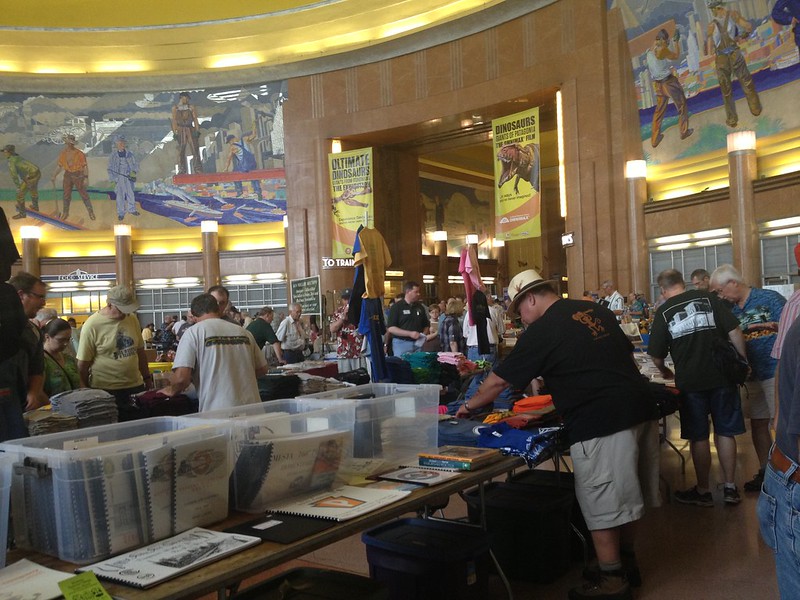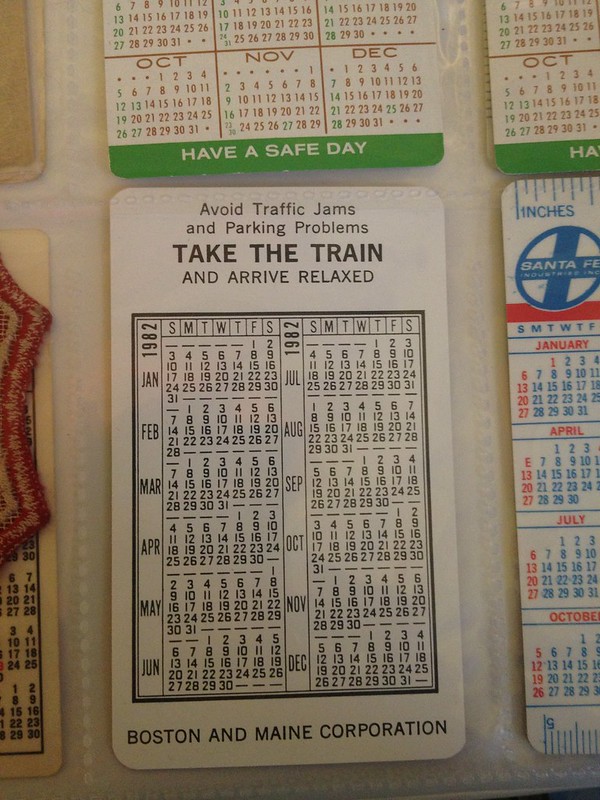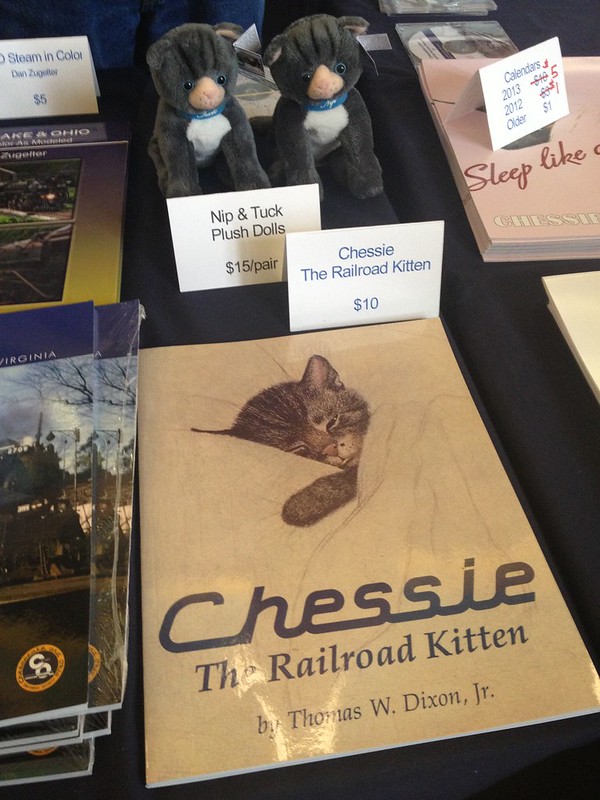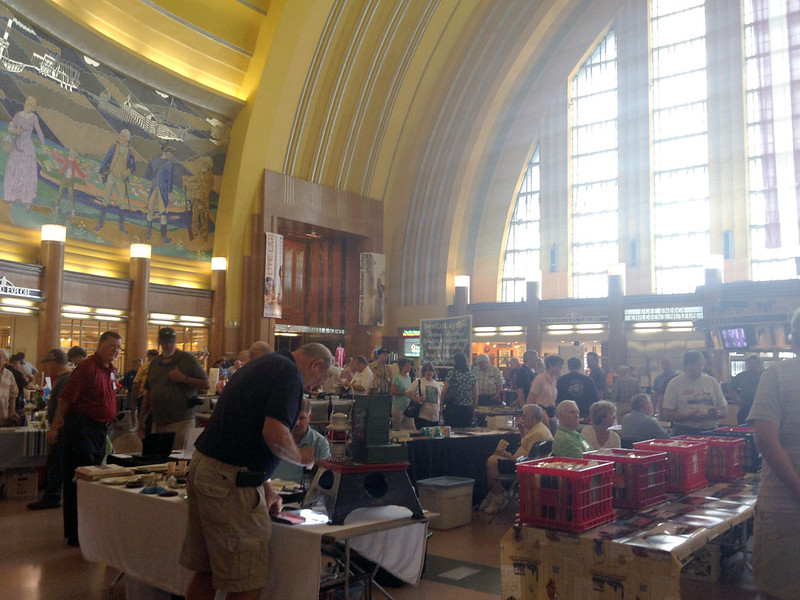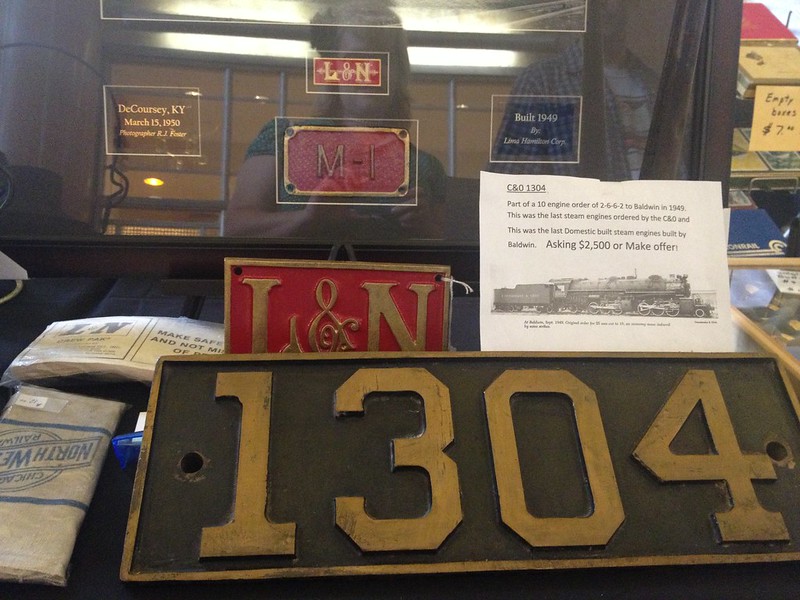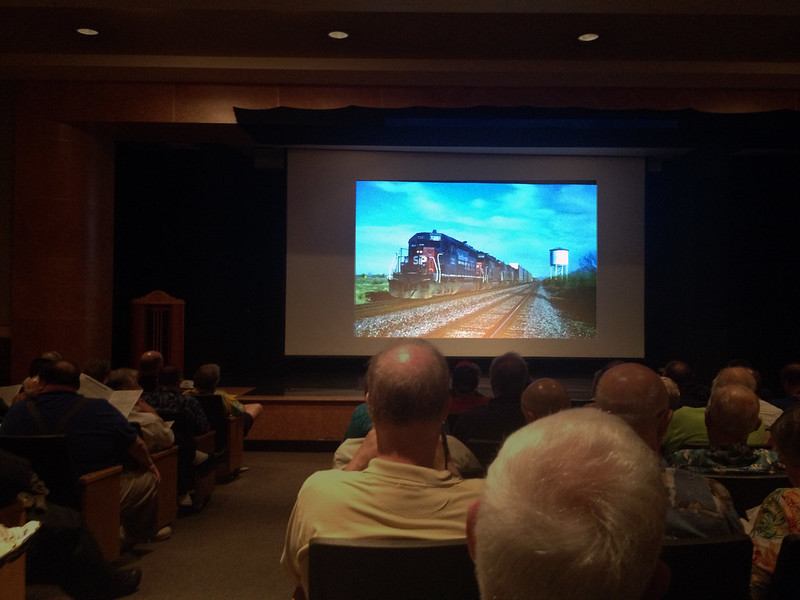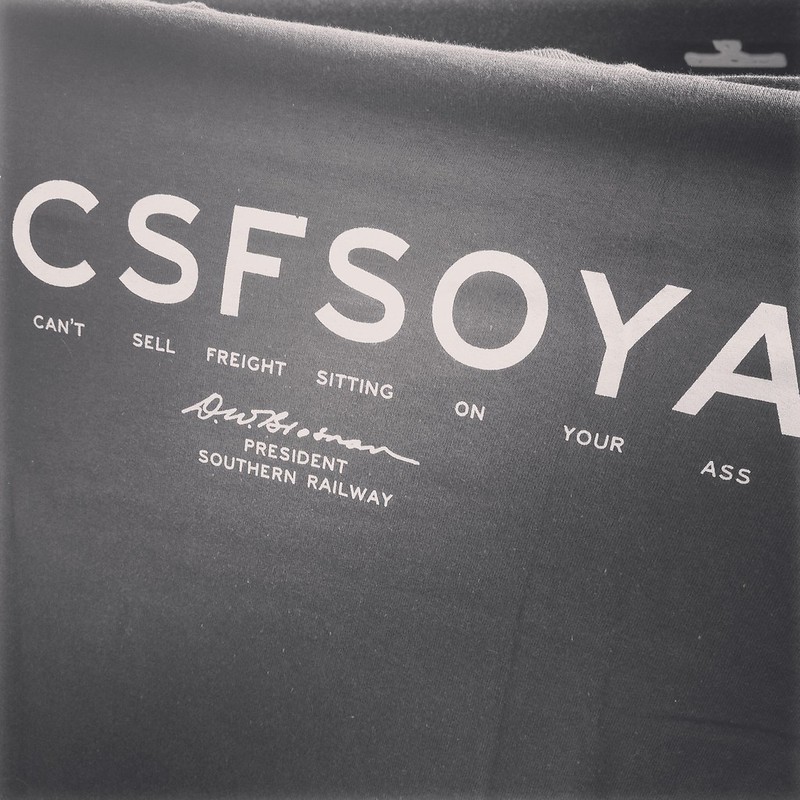Saturday is the official celebration of Summerail, which includes multimedia storytelling over the course of eight hours. Union Terminal's rotunda transforms into a pop-up store, the Railroad Show & Sale. Dozens of vendors and historical societies from around the region bring out their wares for collectors to purchase. There's a little bit of everything for sale at every price range: tee shirts, DVDs, books, magazines, model trains, postcards, antiques, and more. I snatched up this book about Chessie the Railroad Kitten, a mascot of the brilliant advertising campaign for the Chesapeake and Ohio Railway.
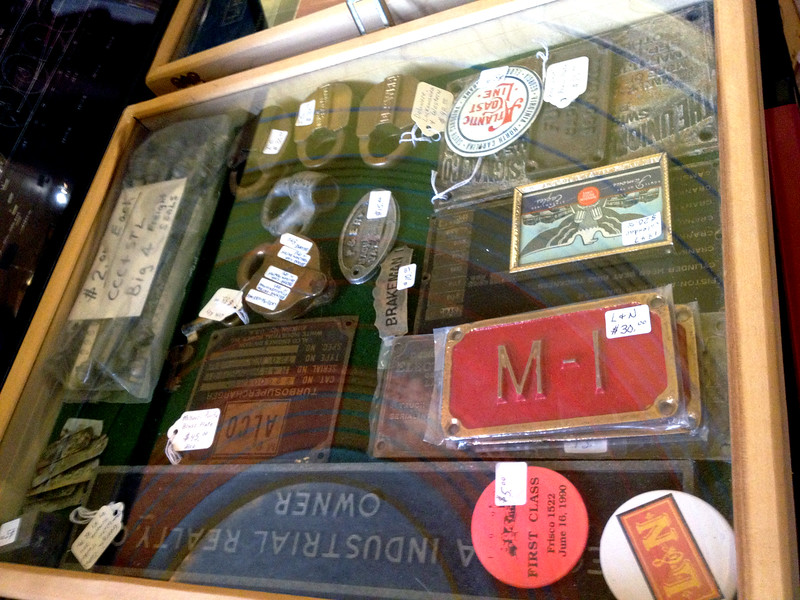 |
| See the reflection of the rotunda in the glass? |
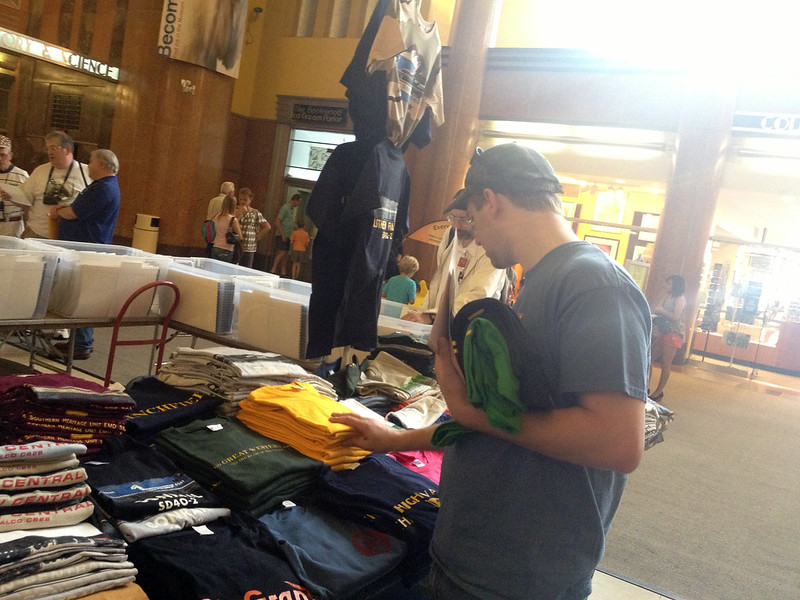 |
| Loading up on a new wardrobe. |
A selection of ten 30-minute presentations are shown throughout Summerail with breaks between every two sets. Each program takes viewers on a different journey to another era or another country. This year's features included rail narratives from Glacier National Park, Appalachia, Hokkaido, Japan, a cross-country trip in the 1970s, a cross-country trip in the early 1950s photographed in color, and more.
My favorite of the lot was Lessons From Hokkaido, which told the story of Japan's backcountry, as observed by Americans who moved there to teach English as a second language. The eye-opening tale of the Hokkaido Rust Belt showed how the area was dependent on coal and manufacturing jobs. It also discussed the importance of small neighborhood trains in transporting the working class. Opportunities dwindled when rail lines were cut back, isolating the blue-collared folks from commuting to other parts of the region. This little-known story is far from what the average American imagines what life is like in Japan; a lifestyle that is very similar to that of Appalachians.
I was equally impressed with a presentation entitled "Why My Friends Just Call Me The Godfather." John Dziobko, Jr. began his collection of railroad photography in 1948. In 1950, he began shooting on Kodachrome, which allowed him to take some of the first color photographs. Now 80 years old, John has begun digitizing his life's work and sharing it online: over 500,000 color slides.
As a techie, I had some doubts about the quality of the old images I would see. Not with the Godfather. The pictures are cinematic quality, perfectly preserved and not pixelated. Each image was of a breathtaking view of both scenery and trains. Most impressive was being able to see people and architecture of the early 1950s in color. Ever seen a color photograph of President Truman? The Godfather has one. Publicized materials of the day were typically black and white; Summerail was my first time seeing a vibrant photo collection from the era.
Regardless if you're a hardcore rail fan, hobbyist, or simply someone who likes to watch travel documentaries, Summerail provides unique entertainment that will transport you around the globe in a matter of hours and leaves you thirsting for your own next adventure.

